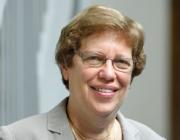Demographic and Socioeconomic Status Differences in Perceptions of Difficulty With Mobility in Late Life
Type
Objectives.
This study assesses whether socioeconomic and demographic differences in reported mobility limitations are attributable to differential perceptions of mobility difficulty that result in the differential use of response categories.
Methods.
Data come from the Social Environment and Biomarkers of Aging Study and its parent study, the Taiwan Longitudinal Study of Aging. Ordered probit models with person-specific cut-points are used to test whether, after controlling for underlying mobility using objective performance measures, cut-points for reporting mobility limitations vary across groups defined by demographic and socioeconomic characteristics.
Results.
Age is the only characteristic that is consistently associated with the location of the cut-points for reporting mobility difficulty: At the same level of underlying mobility difficulty, older adults are more likely than younger adults are to report difficulty with all tasks except short walks. Other variables showed differences but only for one specific activity, for example, urban residents are more likely to report difficulty running than are rural residents with the same underlying level of mobility function.
Discussion.
For most mobility activities, there are no systematic differences in the perception of difficulty by individual characteristics. Thus, for older Taiwanese adults, differences in mobility limitations associated with socioeconomic status are more likely to reflect underlying differences in function than differences in how these groups report the same capacity. The usual loss of mobility with age, however, reflects both a decrease in capacity and a lowering of the threshold for reporting difficulty.

